The significance of floral arrangements in cultural traditions and their meanings cannot be overstated.
From the parched African plains to the lush Asian meadows, the symbolism of these arrangements varies and can represent different emotions.
Depending on the cultural context, flowers express love, grief, celebration, or even political statements.
Understanding these variations can promote intercultural understanding and increase our respect for the vast tapestry of human experiences.
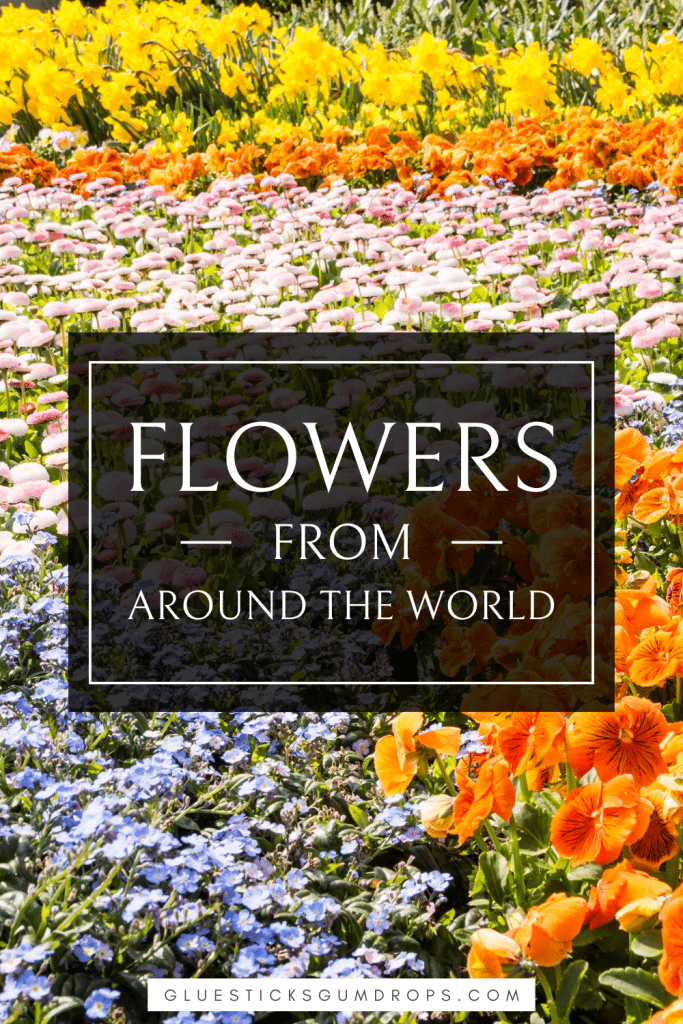
Our bond with flowers is one of our oldest traditions, as evidenced by ancient paintings and artifacts. You can contact a flower delivery in Montreal to get some of the most lovely blooms from around the world.
Many artists have historically and continue to have a significant impact on civilizations and cultures around the world.
Understanding these variations can help us appreciate the complexity of human experiences even more.
So, let us get into this interesting global culture of flowers and understand what these blooms represent in countries worldwide!
South Africa: Christmas Flowers

In South Africa, the holiday season is marked by the blooming of vibrant and beautiful flowers.
One of the most iconic Christmas flowers in the country is the African lily, also known as Agapanthus.
With its striking blue or white petals, this flower symbolizes love, purity, and rebirth, making it a fitting choice for the festive season.
Another popular Christmas flower in South Africa is the Christmas bush, also called the Cape honeysuckle.
Its bright orange or red tubular flower clusters add a cheerful touch to holiday decorations and represent joy and celebration.
In addition to these native flowers, South Africans incorporate traditional Christmas plants like poinsettias and holly into their festive arrangements.
These vibrant red poinsettias, often seen adorning doorsteps and windowsills, symbolize the birth of Jesus and are believed to bring good luck.
Similarly, the glossy green leaves and red berries of holly are associated with everlasting life. They are used to add a traditional touch to Christmas wreaths and centerpieces.
Combining these local and traditional Christmas flowers creates a truly unique and beautiful holiday atmosphere in South Africa.
India: Flowers For Worship
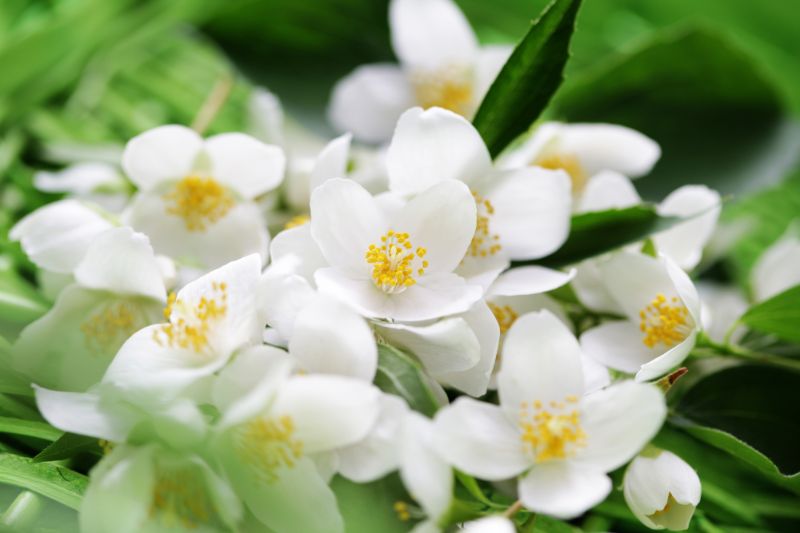
In India, flowers hold a significant role in religious ceremonies and worship. The vibrant and fragrant blossoms are considered sacred and are used to decorate temples, shrines, and altars.
Moreover, Indian paganism has culturally symbolized different Gods and Goddesses with other flowers.
One of the most commonly used flowers for worship is the marigold, known as the “herb of the sun.”
Its bright golden color is associated with prosperity and is believed to attract positive energy.
Another popular flower used in religious rituals is the jasmine, renowned for its delicate white petals and enchanting fragrance.
The jasmine flower symbolizes purity, divinity, and eternal love, making it a cherished offering in many religious ceremonies.
Additionally, the lotus flower holds great significance in various spiritual traditions. Its ability to grow and bloom in muddy waters represents purity and spiritual enlightenment.
The lotus is often offered as a symbol of devotion and is believed to bring blessings and good fortune.
With their vibrant colors and symbolic meanings, these flowers hold a special place in religious worship, creating a serene and auspicious atmosphere for devotees.
China: Feng Shui Plants
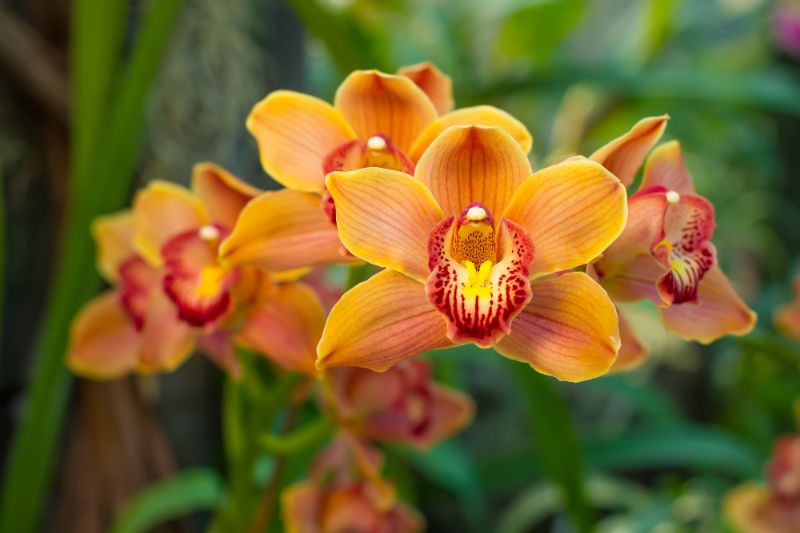
In China, flowers hold significant cultural symbolism and are often associated with Feng Shui, the ancient practice of harmonizing energy.
Several plants, such as the orchid, peony, and lotus, are highly regarded for their auspicious qualities and are believed to bring good luck and fortune.
The orchid, for instance, represents fertility and abundance, while the peony symbolizes prosperity and honor.
The lotus, on the other hand, is a symbol of purity and spiritual enlightenment. These flowers add beauty to Chinese homes and gardens and play a crucial role in creating a harmonious and positive energy flow.
By incorporating these auspicious plants into their surroundings, the Chinese believe they can attract and enhance positive chi, or life force energy.
The presence of these flowers is said to promote a sense of tranquility and balance, creating a harmonious environment that is conducive to overall well-being.
Additionally, these flowers’ vibrant colors and delicate fragrances stimulate the senses and uplift the mood, further contributing to a positive energy flow in the space.
Whether used for decorative purposes or as offerings in religious ceremonies, the ancient practice of incorporating flowers is always auspicious.
This tradition continues to be cherished in Chinese culture forever.
Russia: Mindful Gifting

In Russian culture, flowers hold a special significance in gift-giving.
It is believed that the type and color of the flowers chosen convey specific meanings and emotions to the recipient.
This mindful approach to gifting ensures that each floral arrangement is thoughtfully selected to express sentiments of love, appreciation, or condolences.
It can be a bouquet of red roses symbolizing passionate love or a white lily representing purity and innocence.
No matter the emotion, presenting flowers in Russia is a heartfelt gesture that speaks volumes.
Furthermore, the tradition of giving flowers in Russia extends beyond personal relationships and into professional settings.
It is common for colleagues to present bouquets to one another to show respect and gratitude for their hard work.
In addition, flowers are often given as a sign of congratulations or well wishes during special occasions such as birthdays or anniversaries.
Thus, the act of giving flowers in Russia holds great significance and is seen as a meaningful way to express emotions and sentiments in various aspects of life.
Africa: Symbol For National Cricket Team
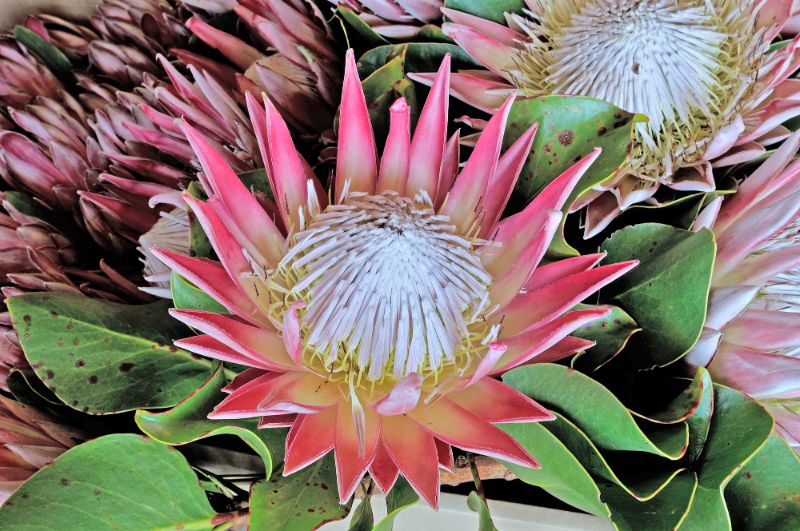
In Africa, flowers hold a significant meaning not only in everyday life but also in sports.
One interesting example is using a specific flower as the symbol for the national cricket team.
The Protea, a unique and vibrant flower native to South Africa, has been chosen as the emblem for the African cricket team.
This choice represents the strength, resilience, and beauty that the team embodies. The Protea’s inclusion in the team’s logo not only showcases Africa’s rich floral heritage.
Moreover, it serves as a reminder of the team’s determination to succeed on the international cricket stage.
The Protea’s bold and striking appearance mirrors the team’s playing style, characterized by aggression and fearlessness.
Just like the flower, the African cricket team stands tall and remains unyielding in the face of challenges.
The choice of the Protea further signifies the team’s commitment to representing their nation with pride and honor.
They strive to establish themselves as a dominant force in the cricket world!
Germany: Colors Are Important

In Germany, the colors of flowers hold great significance. Each color symbolizes different meanings and emotions.
Love and passion are often linked with red flowers, whereas yellow flowers are a symbol of friendship and happiness.
Consider these cultural nuances when giving or receiving flowers in Germany, as the wrong color choice could potentially send the wrong message.
In addition to colors, the types of flowers also carry meaning in Germany. For instance, roses are commonly associated with romance and used as a gesture of love.
On the other hand, lilies are typically associated with funerals, so they should be avoided on celebratory occasions.
Understanding the cultural significance of flower colors and types is crucial in navigating the intricacies of gifting flowers in Germany.
It is important to note that the number of flowers in a bouquet also holds significance.
Odd numbers are typically associated with joyous occasions, while even numbers are traditionally reserved for funerals.
Additionally, giving flowers in person rather than having them delivered is customary, as this shows a greater level of thoughtfulness and personal connection.
By being mindful of these cultural nuances, one can ensure that the gesture of gifting flowers is well-received and understood in Germany.
Japan: Cherry Blossom Day

In Japan, the cherry blossom holds immense significance and is celebrated on Cherry Blossom Day.
This day marks the arrival of spring and the fleeting beauty of the delicate pink blooms.
Cherry blossoms, known as sakura in Japanese, symbolize the ephemeral nature of life and serve as a reminder to appreciate the present moment.
The tradition of hanami, or flower viewing, is deeply rooted in Japanese culture.
In this, people gather under the cherry blossom trees to enjoy picnics and admire the blossoms’ beauty.
The cherry blossom is also associated with love and renewal, making it a popular motif in weddings and other romantic celebrations.
The sight of cherry blossoms in full bloom evokes a sense of joy and optimism as it signifies the end of winter and the beginning of a new season.
The delicate petals, dancing in the wind, create a magical atmosphere that captivates both locals and tourists alike.
Whether in the bustling streets of Tokyo or the serene gardens of Kyoto, the enchanting beauty of cherry blossoms never fails.
It always leaves a lasting impression on those who witness it!
USA: Roses For Love

In the United States, roses are widely recognized as a symbol of love and affection. They are often given as a romantic gesture or to express deep emotions.
Red roses, in particular, are associated with passionate love, while pink roses symbolize admiration and gratitude.
White roses, on the other hand, are often used in weddings and represent purity and innocence.
In addition to their romantic connotations, roses are integral to various occasions through bouquets and arrangements.
This includes events such as anniversaries, birthdays, and Mother’s Day.
Furthermore, roses have a long-standing history in literature and art, often symbolizing beauty and elegance.
Their enchanting fragrance and vibrant colors make them a popular choice for expressing love and conveying joy and celebration.
Whether it’s a single stem or a bouquet, roses can brighten someone’s day and bring a smile to their face.
Their timeless beauty and versatility have made them a timeless and cherished flower for centuries.
Australia: Passion For Gardening
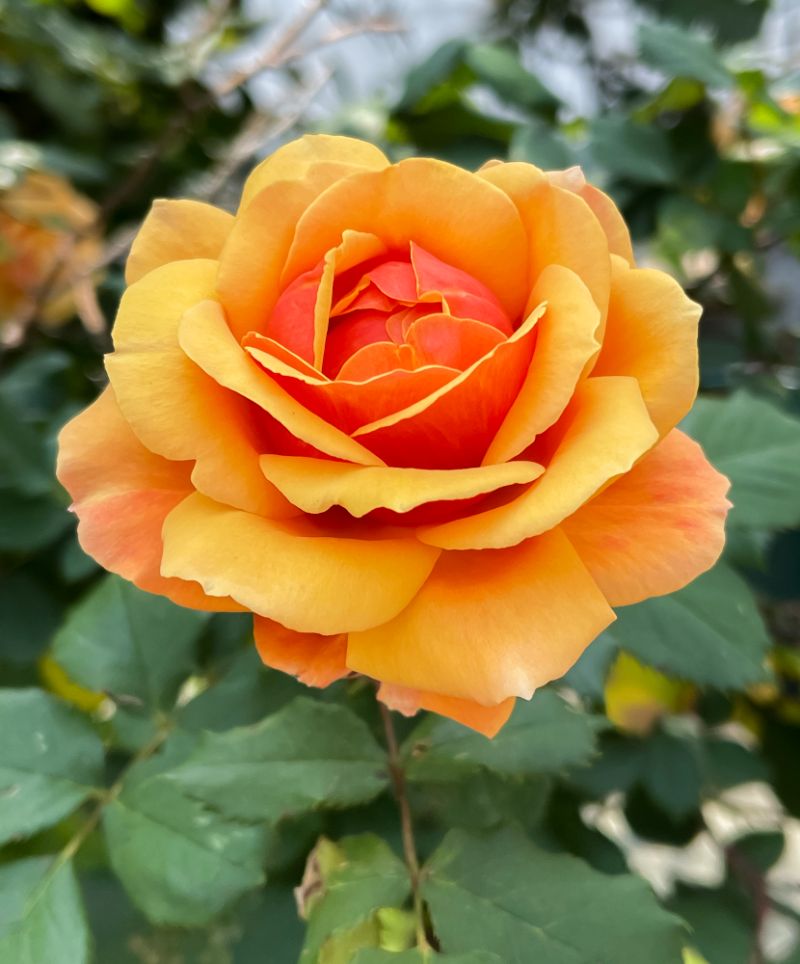
In Australia, the passion for gardening runs deep, and roses hold a special place in the hearts of many avid gardeners.
Australia’s diverse climate and fertile soil provide the perfect conditions for roses to thrive.
From sprawling rose gardens to intimate backyard patches, Australians have embraced the beauty and allure of these exquisite flowers.
The country boasts a rich tradition of rose cultivation, with dedicated enthusiasts constantly experimenting with new varieties and techniques.
This passion for gardening extends beyond simply growing roses; it is a way of life, a cherished hobby that brings communities together and fosters a sense of pride in the natural beauty of their surroundings.
In fact, rose festivals and competitions are held annually across Australia. They showcase the best blooms and provide a platform for gardeners to share their knowledge and expertise. With the perfect blend of climate, fertile soil, and dedicated gardeners, Australia has become a haven for rose lovers, where these delicate and vibrant flowers flourish in abundance.
Mexico: Marigolds For The Dead
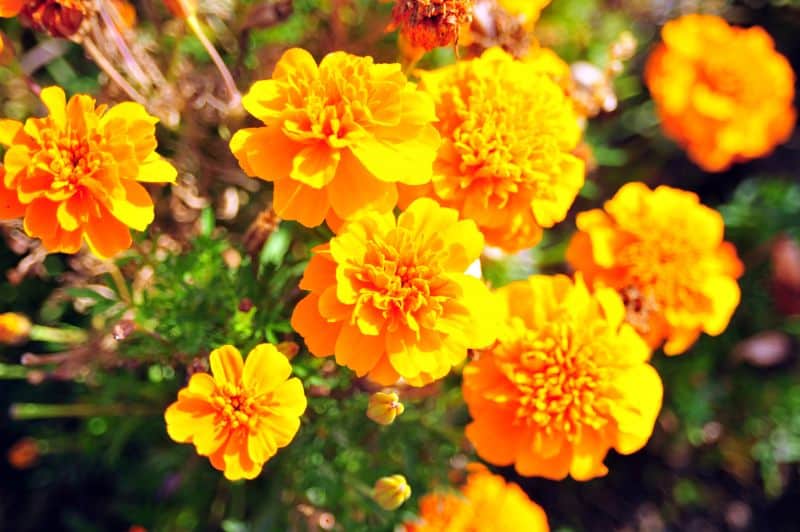
Marigolds hold a significant place in their cultural traditions in Mexico, particularly during the Day of the Dead festivities.
Known as “cempasúchil” in Spanish, these vibrant orange flowers are believed to guide the spirits of the deceased back to their loved ones.
Mexicans decorate altars and graves with marigolds, creating a vibrant and fragrant pathway for the spirits to find their way home.
The strong scent of the marigolds is said to help the souls recognize the offerings left for them, such as food, drinks, and personal belongings.
This tradition dates back to ancient Aztec beliefs, where the marigold was considered a sacred flower.
The strong aroma of the marigolds would attract the spirits and help them navigate their way back to the earthly realm.
Today, the marigold remains an important symbol of remembrance and is an integral part of the Day of the Dead celebrations in Mexico.
The sight of these vibrant flowers adorning altars and graves is a beautiful and poignant reminder of the connection between the living and the deceased.
The marigold’s significance in the Day of the Dead celebrations goes beyond its vibrant appearance.
The petals of the marigold possess magical properties that guide the spirits on the journey.
Marigold petals also scatter along the cemeteries’ paths to create a vibrant and aromatic trail for the spirits to follow.
This tradition not only honors the deceased but also ensures that they are properly welcomed and guided during their visit to the earthly realm.
